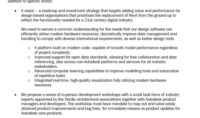The American Institute of Architects, the AIA Foundation and architect-engineer HOK are joining forces to bridge the gap between research and practice in the area of design and health. Under a memorandum of understanding signed last month, HOK, in collaboration with the AIA’s Design and Health Research Consortium, will hold as many as four focus groups in cities across the U.S. to evaluate existing research and identify practice-focused needs for future research to support designing for health.
"This is an opportunity for the AIA, with HOK, to bring in a network of clients and designers who will help the AIA and the consortium teams to understand how research can be most helpful in practice and what may be missing in research in terms of how it's geared toward practice," says Marta Zaniewski, AIA's director for industry relations. "HOK is a great debut partner for the consortium," says Zaniewski. AIA and the consortium hope to add to the list of firm-partners, she adds.
The AIA has organized its design-and-health initiative around six evidence-based approaches—that is, environmental quality, natural systems, physical activity, safety, sensory environments and social connectedness—that architects can use at the building and urban scale.
“We’re excited about the ability of the academic researchers to put metrics behind the impact of design on respiratory illness, obesity, diabetes and other health issues," says Anica Landreneau, director of HOK’s global sustainable practice. “If you can show that design interventions have a positive impact on health, [then] owners, developers and cities can justify measures to improve the built environment."
The AIA, the AIA Foundation and the Association of Collegiate Schools of Architecture in late 2014 established the consortium, which currently has 17 schools of architecture as members, to “advance university-led research in design and health.” Schools such as Columbia University, Drexel University, Texas A&M University and the University of California, San Diego, are participating.
In its first year, the 11 charter-member schools collected almost $12 million for research that connects design to health; developed and offered more than 90 university courses on the subject, to prepare the next generation for the design-health movement; and held 140 public events, including at AIA chapters nationwide, that connected almost 2,000 design professionals and community members.
By the end of the month, AIA expects to have introduced the consortium members to HOK's sustainable-design practice. By the end of the summer, three or four focus groups will be identified, based on matching up research at member universities with regions in which HOK has an office. The meetings will be held by next May.
HOK is volunteering its time and office space to help organize and hold the focus groups. “There is no remuneration,” says Landreneau. “It is our contribution because it’s an area that, as designers, we all care about,” she adds.





Post a comment to this article
Report Abusive Comment